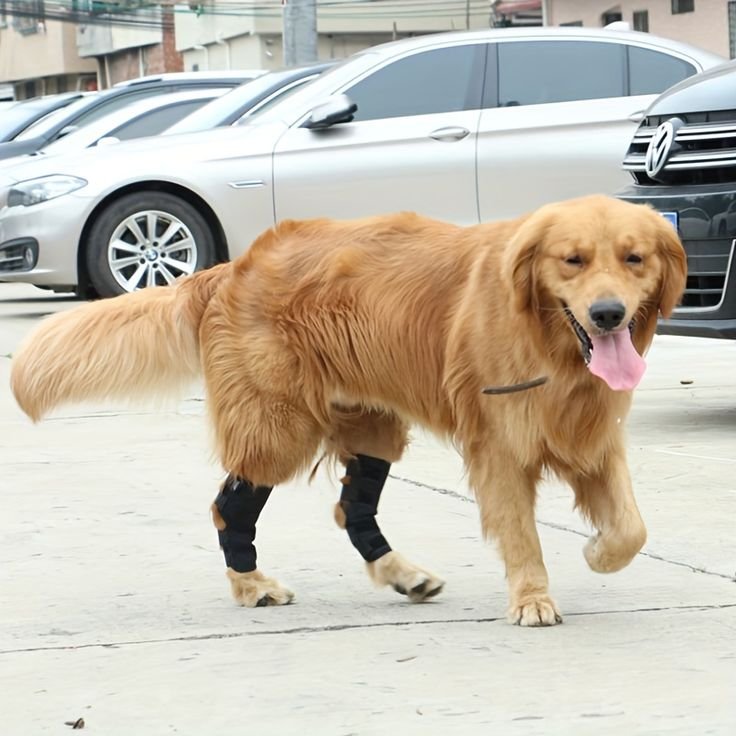Effective Treatments for Dog Arthritis: A Comprehensive Guide

Dog arthritis treatment. Arthritis is a common ailment in dogs, especially as they age. It can significantly impact their quality of life, causing pain and reduced mobility.
Understanding the available treatments and taking early action can make a world of difference for your furry friend.
Understanding Dog Arthritis
Arthritis in dogs is a degenerative joint disease that causes inflammation and pain in the joints.

What is Arthritis in Dogs?
Arthritis occurs when the protective cartilage in the joints wears down, leading to bones rubbing against each other. This results in pain, stiffness, and decreased mobility.
Symptoms and Signs
Common symptoms include limping, difficulty getting up or lying down, reluctance to jump or climb stairs, and noticeable discomfort during walks or play.
Causes and Risk Factors
Factors contributing to arthritis include age, obesity, genetic predisposition, previous injuries, and certain breeds being more susceptible.
Importance of Early Diagnosis and Treatment
Untreated arthritis can severely affect your dog’s quality of life.

Impact on Quality of Life
Arthritis can lead to chronic pain, decreased activity levels, and overall reduced happiness and well-being.
Benefits of Early Intervention
Early diagnosis and treatment can slow the progression of the disease, reduce pain, and improve your dog’s mobility and comfort.
Conventional Treatments for Dog Arthritis
Several conventional treatments can help manage arthritis symptoms.
Nonsteroidal Anti-Inflammatory Drugs (NSAIDs)
NSAIDs are commonly prescribed to reduce inflammation and pain. They can be very effective but may have side effects like gastrointestinal issues.
Pain Relievers
Medications such as tramadol or gabapentin can be used to manage pain, particularly in severe cases.
Corticosteroids
These are potent anti-inflammatory drugs that can provide relief but are usually reserved for short-term use due to potential side effects.
Natural and Alternative Treatments
There are various natural and alternative treatments that can complement conventional therapies.

Glucosamine and Chondroitin Supplements
These supplements help support cartilage health and reduce inflammation, promoting joint health and mobility.
Dog arthritis treatment: Omega-3 Fatty Acids
Omega-3s, found in fish oil, have anti-inflammatory properties that can help reduce arthritis symptoms.
Acupuncture
Acupuncture can provide pain relief and improve mobility in dogs with arthritis by stimulating the body’s natural healing processes.
Physical Therapy
Tailored physical therapy programs can help maintain muscle mass, improve joint function, and reduce pain.
Bio Protect Plus: A Promising Supplement
However, bio Protect Plus is a highly recommended supplement for managing dog arthritis.

Multi vitamins for dogs: Overview of Bio Protect Plus
Therefore, bio Protect Plus is a veterinary-approved supplement designed to alleviate arthritis symptoms and support overall joint health.
Key Ingredients and Benefits
Bio Protect Plus contains glucosamine, chondroitin, MSM, and omega-3 fatty acids, which work together to reduce inflammation, support cartilage repair, and improve joint function.
How It Works
The active ingredients in Bio Protect Plus help rebuild cartilage, lubricate joints, and reduce inflammation, leading to decreased pain and improved mobility.
Diet and Nutrition
A balanced diet is crucial for managing arthritis in dogs.
Importance of a Balanced Diet
Proper nutrition supports overall health and can help manage weight, which is essential for reducing stress on joints.
Anti-Inflammatory Diets
Diets rich in omega-3 fatty acids and antioxidants can help reduce inflammation and support joint health.
Weight Management
Maintaining a healthy weight is vital to prevent additional strain on your dog’s joints. Consult your vet for dietary recommendations.
Exercise and Physical Activity

Regular exercise is crucial for maintaining joint health and mobility.
Importance of Regular Exercise
Exercise helps maintain a healthy weight, strengthens muscles, and improves joint function.
Types of Suitable Exercises
Low-impact exercises such as swimming, walking, and gentle play are excellent for dogs with arthritis.
Creating an Exercise Routine
Develop a consistent exercise routine tailored to your dog’s abilities and limitations. Aim for regular, gentle activity to keep them moving without causing pain.
Physical Therapy and Rehabilitation
Physical therapy can greatly benefit dogs with arthritis.

Benefits of Physical Therapy
Therefore, physical therapy can help maintain muscle mass, improve joint function, and reduce pain.
Hydrotherapy
Swimming or underwater treadmill exercises provide resistance without putting stress on joints, making it an excellent option for dogs with arthritis.
Dog arthritis treatment: Massage Therapy
Massage therapy can relieve muscle tension, improve circulation, and provide pain relief.
Environmental Modifications
Creating a comfortable living environment can help manage arthritis symptoms.
Creating a Comfortable Living Space
Ensure your dog has a warm, dry place to rest, away from drafts and cold floors.
Using Ramps and Non-Slip Mats
Ramps and non-slip mats can help your dog move around more easily and safely.
Providing Orthopedic Beds
Orthopedic beds support joints and provide comfort, especially for dogs with arthritis.
Monitoring and Adjusting Treatment Plans
Regular monitoring and adjustments are essential for effective arthritis management.

Regular Veterinary Check-Ups
Routine vet visits allow for monitoring of your dog’s condition and adjustments to the treatment plan as needed.
Dog arthritis treatment: Monitoring Progress
Keep track of your dog’s mobility, pain levels, and overall well-being to assess the effectiveness of treatments.
Adjusting Treatments as Needed
Work with your vet to adjust medications, supplements, and lifestyle changes based on your dog’s progress and needs.
Combining Treatments for Optimal Results
A multi-faceted approach can yield the best results for managing arthritis in dogs.
Integrating Various Treatments
Combine medications, supplements, physical therapy, and lifestyle changes for a comprehensive approach to arthritis management.
Tailoring Treatments to Individual Needs
Every dog is unique, and treatment plans should be tailored to their specific needs and conditions.
Collaboration with a Veterinarian
Regularly consult with your vet to ensure your dog receives the best possible care and treatment adjustments.
Success Stories and Case Studies
Real-life examples can provide hope and guidance for managing arthritis in dogs.

Real-Life Examples of Successful Treatment
Many dog owners have seen significant improvements in their pets’ mobility and comfort with a comprehensive arthritis management plan.
Veterinary Endorsements
Veterinarians recommend a combination of treatments for the most effective management of arthritis in dogs.
Conclusion
Anyway, managing arthritis in dogs requires a comprehensive approach, combining conventional and alternative treatments, dietary changes, and environmental modifications.
By working closely with your vet and staying proactive, you can help your dog live a comfortable and active life despite arthritis.
FAQs
What are the first signs of arthritis in dogs? The first signs often include limping, stiffness, reluctance to move, and difficulty getting up or lying down.
Can arthritis in dogs be cured? While arthritis cannot be cured, it can be managed effectively to reduce pain and improve quality of life.
How can I help my dog with arthritis at home? Provide a comfortable living space, maintain a healthy weight, offer a balanced diet, and ensure regular, gentle exercise.
Are there any side effects to arthritis medications? Some medications can have side effects like gastrointestinal upset or increased thirst. Always consult your vet for advice and monitoring.
How often should I take my dog to the vet for arthritis check-ups? Regular check-ups, at least twice a year, are recommended to monitor your dog’s condition and adjust treatments as needed.
+Understanding and Treating Dog Constipation: A Comprehensive Guide




0 Comments